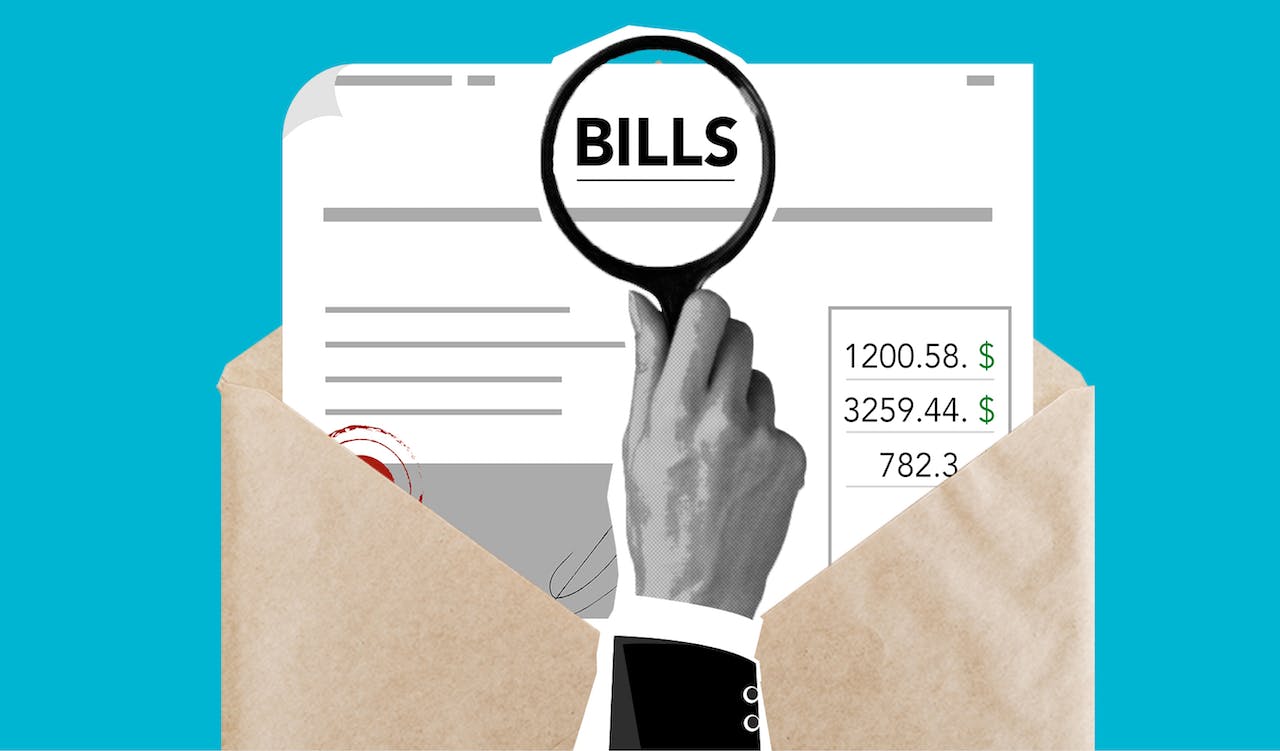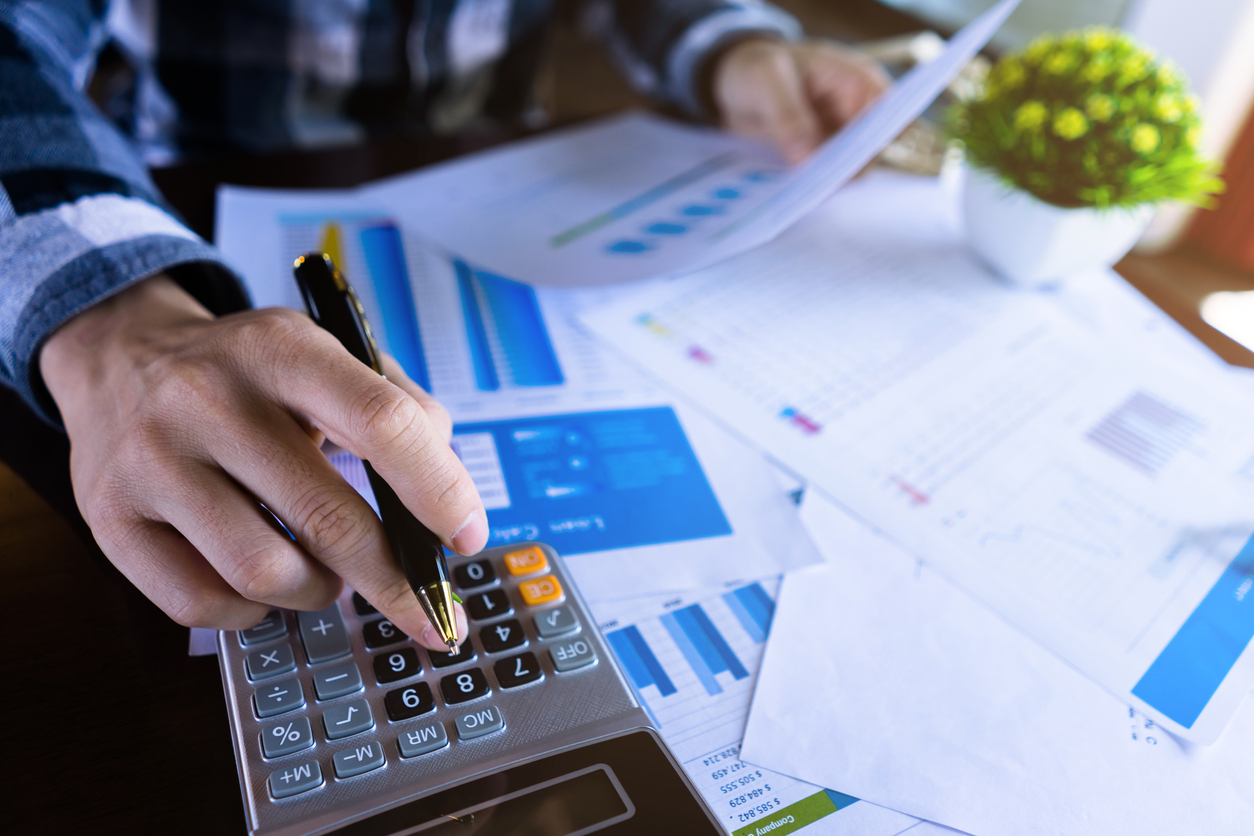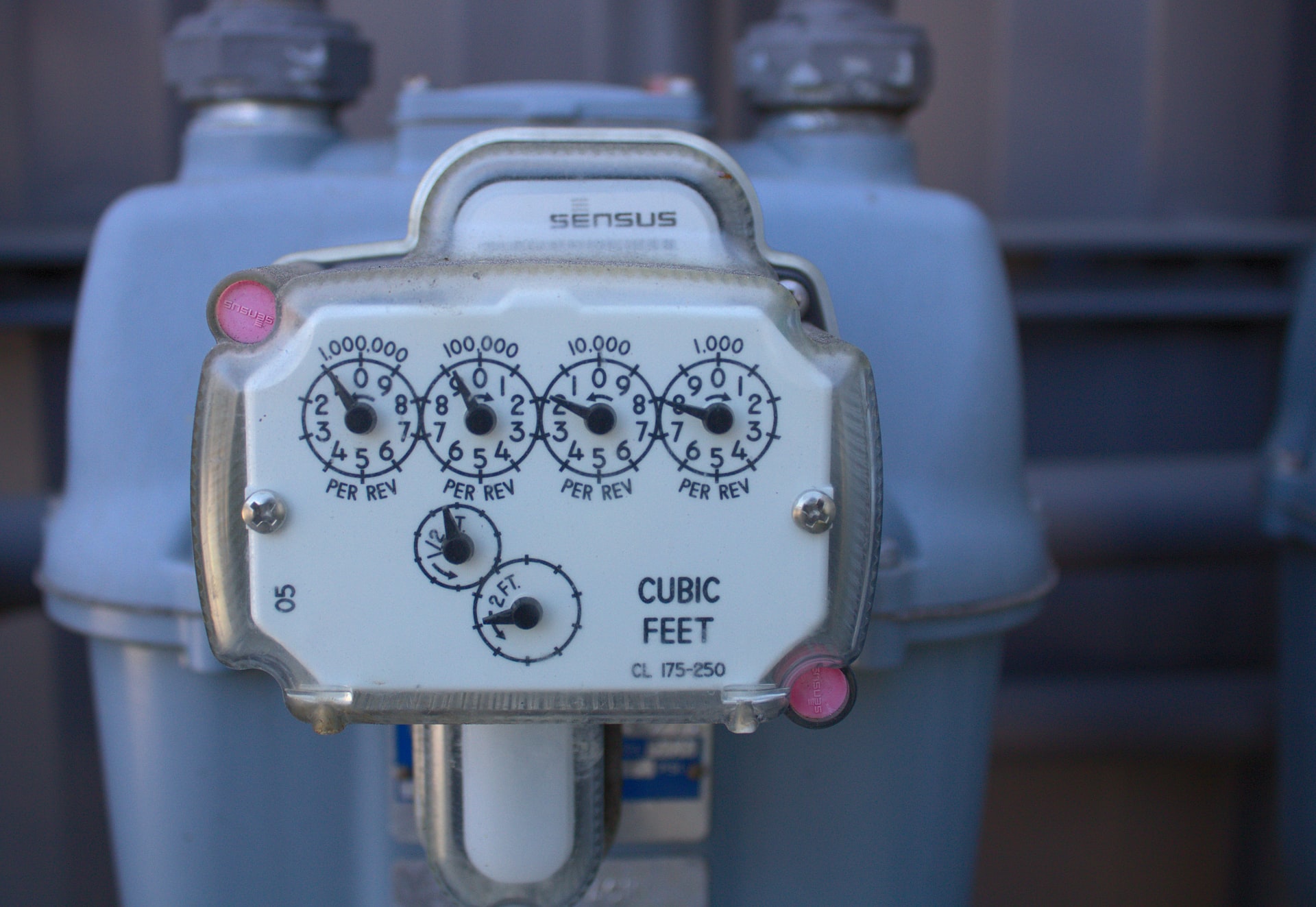By focusing on energy conservation and implementing energy-efficient practices at home, you can significantly lower your utility bills. This article provides expert tips and strategies to help you understand utility bills and reduce energy usage and costs. From adjusting thermostat settings to installing energy-efficient appliances, there are many steps you can take to save money on your utility bills throughout the year.
Energy audit
By assessing a home’s energy usage, an audit identifies inefficiencies and hidden sources of energy waste that might go unnoticed. This allows homeowners to make informed decisions about targeted improvements, prioritize upgrades, and allocate resources effectively. Energy audits not only lead to substantial cost savings by reducing utility bills but also enhance overall home comfort and contribute to environmental conservation efforts by lowering the household’s carbon footprint.
What is a home energy audit?
A home energy audit isn’t as scary as it might sound! In fact, it’s a useful and important tool for anyone who wants to understand more about how energy is used and how it moves around their home. Over the course of just a few hours, a trained professional will visit your home to conduct the audit. They’ll measure air tightness in the home, look for areas of possible heat loss, and, in the end, provide practical recommendations you can use to start improving your home’s energy efficiency.
You might be surprised to learn how your home’s efficiency could be improved. The audit professional may use a thermal infrared camera to show heat loss in unexpected areas. They may recommend you seal ceiling lights, power outlet plates, or laundry vents or notice that your HVAC systems need new filters or cleaning. Even if there are no obvious problems revealed by a home energy audit, it can also be an excellent way to preemptively address items that may become future problems.
Most importantly, when considering a home energy audit, be sure to check if you can receive an audit for free through your utility provider or local municipality.
James Henry from MyHeat
Do a DIY home energy audit
A professional home energy audit is crucial for identifying energy losses and improvement areas. While a DIY audit can reveal immediate savings opportunities, it’s less comprehensive.
- Check for air leaks indoors and outdoors, including around windows, doors, and fixtures
- Seal gaps and cracks to enhance insulation
- Inspect the attic for proper sealing and insulation
- Test outlets to evaluate wall insulation
- Ensure basements have R-25 insulation
- Maintain heating and cooling equipment, replacing filters, and considering upgrades for older units
- Assess lighting efficiency and switch to LED bulbs
- Scrutinize your appliances and electronics, estimating their energy use
- Integrate TrickleStar Advanced PowerStrips into your setup to significantly cut energy consumption for your devices. These strips not only yield cost savings through conservation but also extend the device’s lifespan. They provide top-notch surge protection, ensuring safety and performance.
- Develop a budget-based plan, factoring in the payback period, additional benefits, and ownership duration.
Consider professional audits and upgrades by hiring a contractor if necessary. Regular maintenance is vital for peak energy efficiency.
Jason J Clark from TrickleStar
What is a Ratio Utility Billing System? (RUBS)
A ratio utility billing system, often referred to as “RUBS,” allocates utility costs among multiple tenants in a multi-unit property, such as an apartment complex or a multi-tenant commercial building with master-billed utilities. Instead of individually metering each unit for utilities like water, gas, or electricity, a RUBS system divides the total utility expenses based on predetermined ratios, typically determined by factors like the square footage of each unit, the number of occupants, and amenities in each unit. The property owner often covers a percentage of the total bill for common area amenities or goodwill.
For example, if one apartment is twice the size of another or one unit has a washer and dryer, but another doesn’t, it may be assigned a higher percentage of the total utility costs. This system aims to distribute expenses more fairly among tenants, accounting for usage and property size variations. While RUBS can simplify billing for property owners and management, it must be implemented transparently and fairly to avoid disputes among tenants. It’s important for property managers and owners to communicate the allocation method and ensure it complies with local regulations, especially in areas subject to rent control. It’s also important to have a trusted billing partner to ensure that allocation tables are accurate and bills are sent and collected in a timely, professional manner.
Annette Gallagher from Livable
What tools and technologies are available for homeowners to monitor their daily energy consumption effectively?
Nowadays, it is easy to know how much energy each appliance uses thanks to smart devices. Some smart thermostats, water heater controllers, electric load controllers, plugs and power outlets can tell you how much electricity they use and how much it costs you thanks to powerful algorithms embedded within the devices and apps.
Such information empowers users to make the right choices in their electricity consumption. This data also helps consumers know what smart moves pay the most for them and translates into real dollars saved.
Also, let’s not forget that more and more power utilities have time-of-use rates and demand-response programs. As a result, there are periods within the day where energy costs more and other periods where it costs less; a kilowatt-hour used will not cost the same throughout the day, which can significantly impact the electricity bill. An attractive solution is to select smart devices that can tie with power utilities’ programs to make sure that, when possible, you can consume kilowatt hours during low-rate periods.
Maxime Labonté, Chief Commercial Officer at Sinopé Technologies

Tips for reducing utility bills
From managing your internet usage by selecting the best internet speed to optimizing your electricity consumption and even conserving water and gas, these tips will make a noticeable difference in your monthly bills.
Impact of home insulation on utility bills
To reduce your utility bills, only a few big-ticket items will make a real impact. The importance of each of these will depend on where you live, your energy usage, and the condition of your home.
The big ticket items that require cash upfront to reduce the cost of running your home are:
- Improve your home insulation
- Add rooftop solar
- Replace older inefficient energy appliances, e.g., HVAC, dryer, fridge.
These three upgrades will significantly reduce your home’s energy bills. Depending on where you live, your home insulation or star rating will impact your day-to-day comfort levels and the cost of running your home.
The basic principles of home insulation are:
- Jam as much insulation into your ceiling as possible, more is needed. This minimizes heat penetrating in summer and the loss of warm air in winter.
- Double-glaze your windows (or even triple-glaze in extreme climates). If you can’t afford double glazing, add external shades/awnings for summer and thick internal curtains for winter.
And the things we can all do on a day-to-day basis are:
- Ease off on the HVAC, i.e., run it less or at a lower temperature in winter and a higher temperature in summer.
- In temperate or warm climates, maximize your airflow through the house
- In colder climates, only heat the spaces you are using
- Replace any old incandescent lights with LEDs
To reduce your electricity bill further, consider getting rooftop solar, which in sunnier regions can reduce your electricity bill to near zero.
And don’t bother nagging the kids to turn off the lights, that 1 degree extra on the HVAC or ten minutes watching the big screen TV uses up far more energy.
Stefan Jarnason from Solar Analytics
Benefits of smart electrical panels for saving energy
Saving money and energy is a lot easier with smart electric panels. It’s like having an electricity detective in your circuit box; they show you where your house uses the most electricity so you can focus on the hot zones, increasing your energy bill.
This makes it a lot easier to spot problem areas and fix them. For example, adjusting heating or cooling in certain rooms where it’s only sometimes needed. Small changes like these could add up to big savings. You could save hundreds or even thousands of dollars every year. These smart electric panels pay for themselves by cutting down your energy bills and making your home a lot smarter. We’re making everything else in our house smart, but most of the time, we are still determining why our electricity bill is as expensive as it is and what we can do to fix it. It’s the logical next step, and it happens to be something that can save you serious money.
Aside from the cost savings, there are also some impressive safety features, like fault detection, smart alerts, and other monitoring to prevent fires and respond quickly to electrical issues. It’s some nice peace of mind to have a “brain” standing between those high-voltage lines and your home.
Tom DeKoek from Good Home Automation
How Is Solar Energy Used To Power A Home?
To summarize the technical process, energy from sunlight is captured by photovoltaic (PV) solar modules and converted to direct current (DC) electricity and then through an inverter the electricity is converted to alternating current (AC) which is sent to a home’s electrical panel and potentially an energy storage battery system. Depending on a home’s electricity consumption and the solar PV system’s electricity production, solar energy produced during the day will offset the home’s usage by a portion or by 100% or more. Any over-production of electricity, depending on the electric utility rate structure and program, may be credited back towards the home’s annual usage and/or may be delivered to an energy storage system (ESS). With an energy storage system, power can be stored for use in a grid outage and/or discharged to offset utility usage. The most common pain point for our customers is the ever-growing cost of electricity, and the solution is primarily a solar system, including a home energy storage battery system. Homeowners today are looking to increase their energy independence and not rely so heavily on the utility.
Kyle Smith, General Manager at Solar Optimum
Internet usage
Optimize internet plans
- Evaluate your plan to ensure it matches your needs
Electricity bills
Appliances
- Invest in energy-efficient appliances. They consume significantly less electricity
- Unplug electronics and chargers when they’re not in use. Even in standby mode, devices consume energy
- Consider smart plugs and power strips that automatically cut power to devices when turned off
Temperature control
- Set your thermostat at energy-efficient levels. Lower the heating in winter and raise the cooling in summer by a few degrees
- Use fans strategically to circulate air. Ceiling fans can help distribute heated or cooled air more efficiently, allowing you to adjust your thermostat slightly
Lighting
- Use natural light during the day to reduce the need for artificial lighting. Keep curtains and blinds open to let sunlight in
- Install energy-efficient windows and consider using reflective window films to block out heat during summer
Most common factors that contribute to a high electric bill
The most common factors contributing to a high monthly electric bill are the temperature at which you keep your home and the contrast to the temperature outside, particularly in hotter climates like southern states. For example, if it’s 85 outside and you want to set your home to 72, it will be substantially more expensive than if it’s 85 outside and you want to set your thermostat to 76. That and the size of the home are the most common factors that affect everyone regarding their utility bill, other than the rate they’re paying for electricity or natural gas.
The other things that really can do a number on utility bills are certain appliances. The biggest example is a pool and the temperature at which the pool is heated. That’s the biggest energy suck on a home, followed right behind by homes where customers charge their electric vehicles. After that, you can get into whether customers have energy-efficient windows, energy-efficient appliances, and good (read: not old) insulation. Old air conditioning units can also make a huge difference. People would be amazed how much more energy a 20 or 30-year-old A/C unit takes to function as opposed to one made in just the last 10 or so years.
All of the factors above mix together to determine the cost of a customer’s utility bill.
Matt Oberle from Texas Electricity Ratings
Save energy by reducing phantom loads in our homes
Phantom loads, the hidden energy consumers in our homes, can significantly impact our electricity bills. These are the devices that continue to use power even when they’re turned off, silently adding up costs. By addressing phantom loads, we can conserve energy and save money.
First, identify the common culprits: chargers for phones and tablets, computers, game consoles, monitors, TVs, and satellite or cable boxes. These devices, even when not in active use, consume power. The simple act of unplugging them when they’re not needed can lead to noticeable energy savings.
Next, consider your habits. Turning off devices completely instead of leaving them in sleep mode can make a substantial difference. For instance, a computer left in sleep mode overnight still draws power. Shutting it down can cut down on unnecessary energy use.
Grouping devices on a power strip is another effective strategy. This allows you to easily turn off multiple devices at once, ensuring they don’t consume power when not in use.
Lastly, investing in Energy Star® certified appliances and smart devices that monitor energy usage can further optimize your home’s energy efficiency. These steps, when implemented, can significantly reduce phantom loads, leading to both energy conservation and cost savings.
Luke Begley from Circuit IQ
How to get a fixed-rate electricity plan
Tired of unpredictable spikes in your electricity bill? Maybe it’s time to shop for a fixed-rate electricity plan. You can choose an electricity provider if you live in a deregulated electricity market like Ohio, Pennsylvania, or Texas.
A fixed-rate electricity plan gives you stability and protection against the fluctuating energy market. You’ll have a consistent rate throughout your contract. Compare that to utility rates, which change up to 4 times annually.
To get the best fixed-rate electricity plan, you must carefully review and compare offers from different providers. Using a tool like ElectricityPlans.com helps you more easily compare electricity plans.
Some things to look at include price per kWh, term of the agreement, any monthly charges, and early termination fee. Shorter-term plans give you flexibility, but you may get a better price with a two or three-year contract.
In most cases, the plans are straightforward fixed rates. But read the fine print to watch for tiered rates and bill credit plans. These plan types advertise a low rate, but if your usage differs from what’s specified, you’ll pay a higher price.
A fixed-rate plan gives you peace of mind about controlling your electricity bill.
Rebecca Bridges from Electricity Plans
Energy conservation habits people can do to help the environment
Adopting energy conservation habits is a crucial step in helping the environment. As individuals, we can all contribute to significantly reducing energy consumption and environmental impact. Here are some actionable habits that you can integrate into your life.
- Use smart power strips: Invest in smart power strips to automatically turn off power to devices when not in use, as this will help reduce phantom energy drain.
- Switch to LED bulbs: Replace traditional incandescent light bulbs with energy-efficient LEDs, which use significantly less energy and last longer.
- Seal cracks: Seal cracks around doors and windows to prevent heat loss, significantly reducing heating and cooling energy consumption.
- Unplug devices: Unplug electronic devices when not in use. Even when turned off, devices like TVs, chargers, and computers consume standby power.
- Energy-efficient appliances: Choose appliances with high energy efficiency ratings. These consume less electricity and are more environmentally friendly. Look for an Energy Star symbol on the product or look up the product online.
- Use natural light: Take advantage of daylight as much as possible instead of relying on artificial lighting. This not only saves energy but also improves your mood and productivity.
- Plant trees strategically: Planting trees around your home can provide shade in the summer and block cold winds in the winter, reducing the need for heating and cooling.
Peace Omodele from ACAP Saint John
Saving energy while doing laundry
When it comes to saving energy while doing laundry, there are several techniques you can employ. Opt for cold washing as much as possible, as around 90% of the energy consumed during washing clothes goes towards heating the water. Ensure you run full loads to maximize the energy used per wash cycle. Air-dry your clothes whenever you can instead of using the dryer. If you must use the dryer, clean the lint trap to improve its efficiency after each use.
Additionally, consider using energy-efficient appliances that could significantly reduce your energy consumption over time. This combination of methods can significantly help reduce your energy usage and carbon footprint.
Nikki Bahan from Nikki’s Plate
What daily habits and behavioral changes can homeowners adopt to reduce water consumption, both indoors and outdoors?
“One way in which I have drastically reduced the indoor water consumption when I shower is to use a 5-minute timer. It’s kind of like a little plastic hourglass-shaped thing that has a suction on it. I attach it to my shower glass, and the sand runs out when 5 minutes are up. It’s a great way to be mindful and more cognizant of the time you are in the shower.
To reduce outdoor water consumption, we also use a timer, but it is electronic. In our jurisdiction, for summer months, we are only allowed to water once a week at certain times of day (usually early in the morning). The electronic timer allows us to turn on the sprinkler at 5:00 am. In the initial years of living in our home, we thought one of us would remember to go out and turn on the sprinkler, but when you have two kids and are tired all the time, automation is better! We learned the hard way when all our grass died, and we had to reseed the lawn.”
Water conservation
Fix leaks promptly
- Repair any leaks in faucets, pipes, or toilets immediately
Mindful water usage
- Take shorter showers and turn off the tap while brushing your teeth or washing dishes
- Collect rainwater for home usage
Tips to reduce your water bills
A rainwater tank is an excellent addition to any property and offers a variety of uses, such as providing water for toilets and laundry when plumbed into a house. As an Australian-owned rainwater tank manufacturer based in one of the world’s driest countries, we understand that the initial cost of integrating a rainwater tank system with toilets and laundry may be a concern. However, we assure customers that the long-term savings on water bills are worth the investment.
Here are some tips to save water at home:
- In the bathroom, turn off the tap while brushing your teeth, reduce shaving frequency, and limit showers to three minutes.
- To save water when flushing the toilet, consider installing a dual-flush system, ensuring that flapper valves are in good condition, and avoiding using the toilet as a wastebasket.
- For water-efficient laundry practices, choose energy-efficient washing machines and run full loads, reuse clothes whenever possible, select the appropriate washing cycle, and avoid using hot water.
- To further save on your water bills, regularly check for leaks throughout your home
Additionally, inquire about rebates offered by your local council for purchasing and installing new water tanks. These programs can significantly lower the initial cost of a rainwater tank system, leading to financial savings.
Habits for saving water inside the house
There are practical reasons to conserve water, like saving money. If your water source is from a water company or Authority that meters your water, you’ll pay less if you use less. If you have a private well, you’ll extend the life of your pump and septic system. Remember, your water isn’t free. Someone paid for the installation of the well and septic system. You not only need to maintain it, but you also use electricity to pump up the water. Also, every time your pump starts, it dies a little and is one start closer to failing.
Everyone is familiar with some water-saving measures. Yet did you know that the average American uses 80 gallons of water daily, and 40 percent (about 32 gallons) of that water goes straight down the drain? You can reduce waste by changing your practices and using more efficient appliances, but ultimately, people need to change their habits to conserve.
There are many ways to conserve. All you have to do is look at your lifestyle and use a little common sense. Here are some tips you can apply to conserve water inside your home:
- Check plumbing for leaks
- Adjust all water-using appliances to use the minimum amount of water needed
- Install a toilet dam or water displacement device to reduce the water used when flushing
- Don’t let water run when doing dishes, brushing teeth, shaving, and washing hands and face
- Refrigerate a bottle of water instead of letting water run to get cold
- Pre-rinsing dishes for the dishwasher is usually unnecessary. Only run the dishwasher when complete
- Take shorter showers and install low-flow shower heads and aerators on household faucets
Read more about habits for saving water at home.
Mr. Brian Oram from Know Your H2o
Saving water in the garden
With over two decades in the landscaping industry, conserving water in the garden is environmentally responsible and cost-effective. Here are my top water-saving tips:
- Mulching. Apply a thick layer of mulch around your plants. This helps retain moisture, reducing the need for frequent watering.
- Drip Irrigation. Switch from traditional sprinklers to drip irrigation systems. They deliver water directly to the roots of the plants, minimizing waste and evaporation.
- Native Plants. Opt for native plants adapted to your region’s climate and soil. They require less water and are more resistant to local pests and diseases.
- Watering Schedule. Water early in the morning or late in the evening when temperatures are cooler to reduce evaporation. Also, only water when necessary rather than on a fixed schedule.
- Rain Barrels. Collect rainwater in barrels to use in your garden. It’s a free, natural resource that plants love.
By implementing these strategies, gardeners can significantly reduce water usage while maintaining a vibrant and healthy garden.
Gene Caballero, co-founder from GreenPal
Saving water outside the home
When it comes to saving water outdoors, here are some quick tips to maximize your water use:
- Go native and limit turf in landscapes. Reduce or omit thirsty bluegrass and replace it with xeriscape and native, drought-tolerant plants and flowers. Check if your utility has any rebates or incentive programs to help with turf removal and replacement.
- Water at dawn or dusk. Water in the cooler hours of morning or evening and avoid over-watering to the point of run-off. Try the cycle and soak method: Break watering times into three short cycles and allow an hour of soak time in between./
- Be sprinkler smart. Install efficient sprinklers like drip irrigation, rotary nozzles, and smart irrigation systems. Then, maintain by repairing broken sprinkler heads and changing program settings seasonally. Don’t forget to adjust sprinkler heads to avoid watering streets and sidewalks… they won’t grow!
- Skip the crewcut on the grass. Keep lawns at least three inches tall to encourage deeper roots and better water retention, and aerate in the spring or fall to open up the soil to retain moisture.
- When it rains, use it. Skip watering if it recently rained or rain is in the forecast. Direct downspouts to garden areas, not sidewalks or streets, and use rain barrels to capture rainfall for later use on plants and flowers. See if your local municipality allows for rain barrel usage.
- Sweep, don’t spray. Use a broom, not a hose, to clear debris from sidewalks and driveways.
- Use your voice. Not a homeowner? Talk to your property manager or HOA about smart outdoor watering practices. And anyone can encourage local officials and utilities to improve water conservation in their town or city.
Sabrina White from Water Education Colorado
Reducing water usage inside the house
Conserving water isn’t just good for the environment and a smart way to lower your water utility bill. Here are some practical solutions you can put into action today to reduce your water consumption inside and outside your home. By implementing these measures, you’ll not only save on utility expenses but also positively impact the environment, all from the comfort of your own home!
- Fix Leaks Promptly: Addressing leaks in faucets and pipes promptly prevents unnecessary water wastage.
- Install Water-Efficient Appliances: Opt for appliances such as low-flow toilets and aerated faucets to significantly decrease water consumption in your home.
- Adjust Irrigation Timing: Set irrigation systems to water plants and lawns during early morning or late evening to minimize water evaporation and maximize absorption.
- Use a Broom Instead of a Hose: When cleaning driveways and sidewalks, opt for a broom instead of a hose to save water and reduce unnecessary runoff.
- Turn Off Tap While Brushing Teeth: Develop the habit of turning off the tap while brushing your teeth to conserve water and promote responsible water usage.
- Run Dishwasher and Washing Machine with Full Loads: Ensure optimal water usage by running the dishwasher and washing machine only when they have full loads, maximizing efficiency and minimizing waste.
As you can see, the journey to water conservation starts at home. By following these practical tips, you can save water, money, and the environment. Remember, every drop saved makes a difference, both in your pocket and in the broader effort to secure a greener, more sustainable world!
Laura Rodriguez from Inland Empire Waterkeeper
Lowering gas bills
Proper insulation
- Ensure your home is well-insulated. Proper insulation helps retain heat, reducing the need for constant heating in winter
- Seal gaps and cracks in doors, windows, and walls to prevent drafts, which can lead to increased gas usage for heating
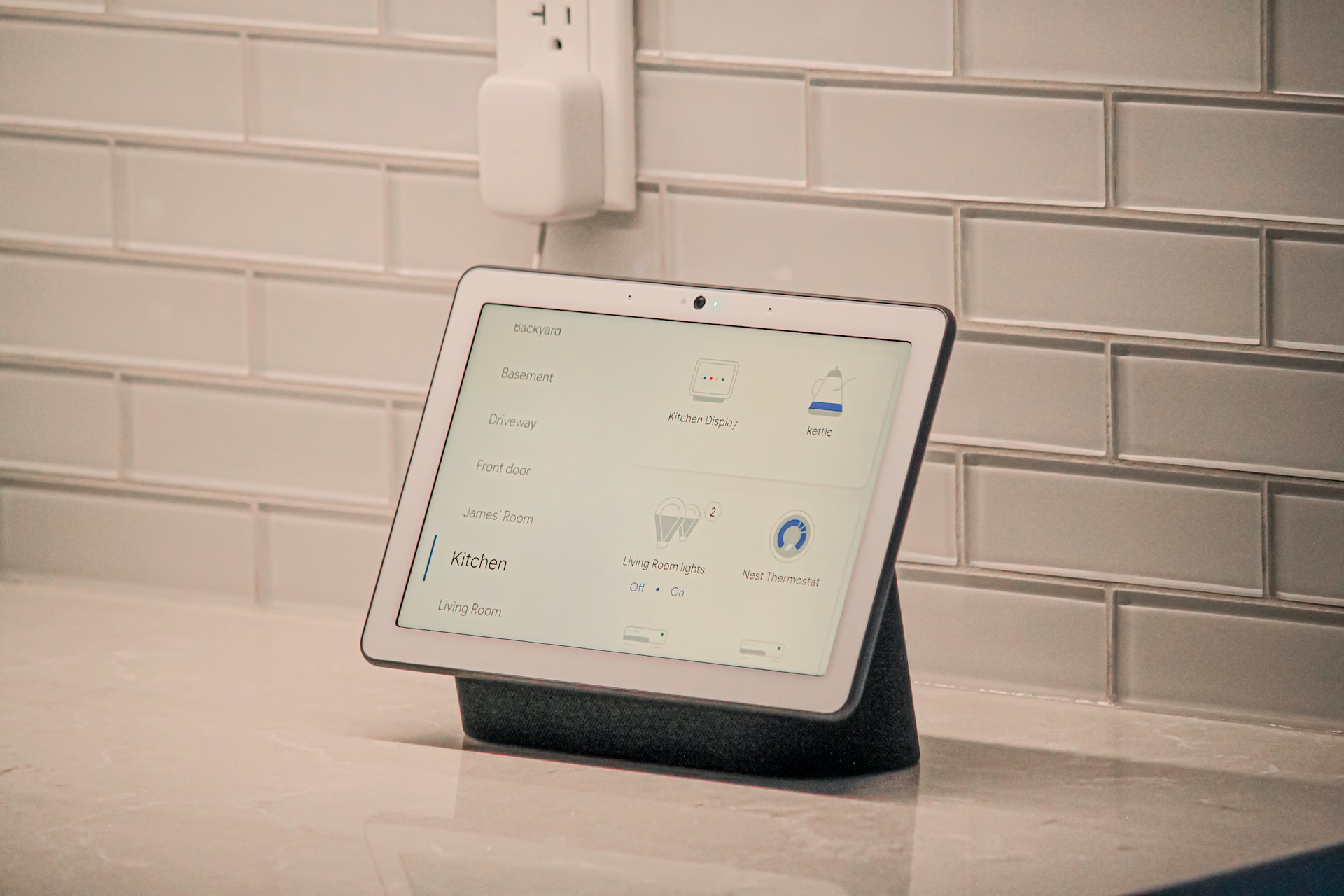
Smart home gadgets
Smart home gadgets enhance energy efficiency by seamlessly integrating technology into daily routines. These intelligent devices, such as smart thermostats, lighting systems, and appliances, offer automation and precise control, allowing homeowners to optimize energy usage. Smart home gadgets provide valuable insights into energy consumption patterns through data analytics and real-time monitoring, enabling informed decisions to minimize waste. Smart home hubs can sync between different devices to maximize efficiency.
These gadgets promote awareness and behavioral changes among occupants by offering real-time feedback on energy usage and encouraging responsible habits.
How does the implementation of smart glass technology contribute to improved energy efficiency in homes?
Smart glass technology offers homeowners a great solution to enhance energy efficiency in their homes. Smart glass adjusts its transparency based on external conditions, optimizing natural light and minimizing the need for artificial lighting. This technology helps regulate indoor temperatures and even reduces the reliance on heating or cooling systems.
Moreover, smart glass can tint itself to limit solar heat gain, preventing the interior from overheating. It helps to minimize the workload on air conditioning units, resulting in lower energy consumption and reduced electricity bills. Additionally, the ability to dim smart glass in the evenings ensures privacy and decreases the need for artificial lighting, further reducing energy usage.
Smart glass technology is an investment that pays off through reduced energy consumption and lower utility costs. Homeowners can enjoy a more sustainable and cost-effective living environment while contributing to a greener future.
Smart Glass Country
Smart trends save energy at home
Many types of smart technology can help you save energy and money on your utility bills. A few that can have an impact are smart thermostats, smart electrical panels, and smart lighting. Smart thermostats “learn” to control the heating and cooling according to the homeowner’s living patterns. Picking up on your habits and adjusting the temperature automatically leads to more efficient energy use and potential cost savings.
Smart electrical panels are an emerging trend that will delight homeowners. They do the same thing as old-fashioned electrical panels, but they are a better match for today’s sophisticated smart homes, electric vehicles, solar energy, and more. A smart panel continuously monitors energy usage throughout the house and communicates to the homeowner’s app or computer when some circuits could be shut off to save energy. They can also allocate energy usage to off-peak times to save money or draw energy from a solar battery instead of the grid during peak times.
Smart lighting makes it easy to control your home’s lighting directly from your mobile or other smart device. Creating automated schedules for turning lights on and off at specific times allows you to understand better and control your usage.
Nicole Burford from Clean Energy Credit Union
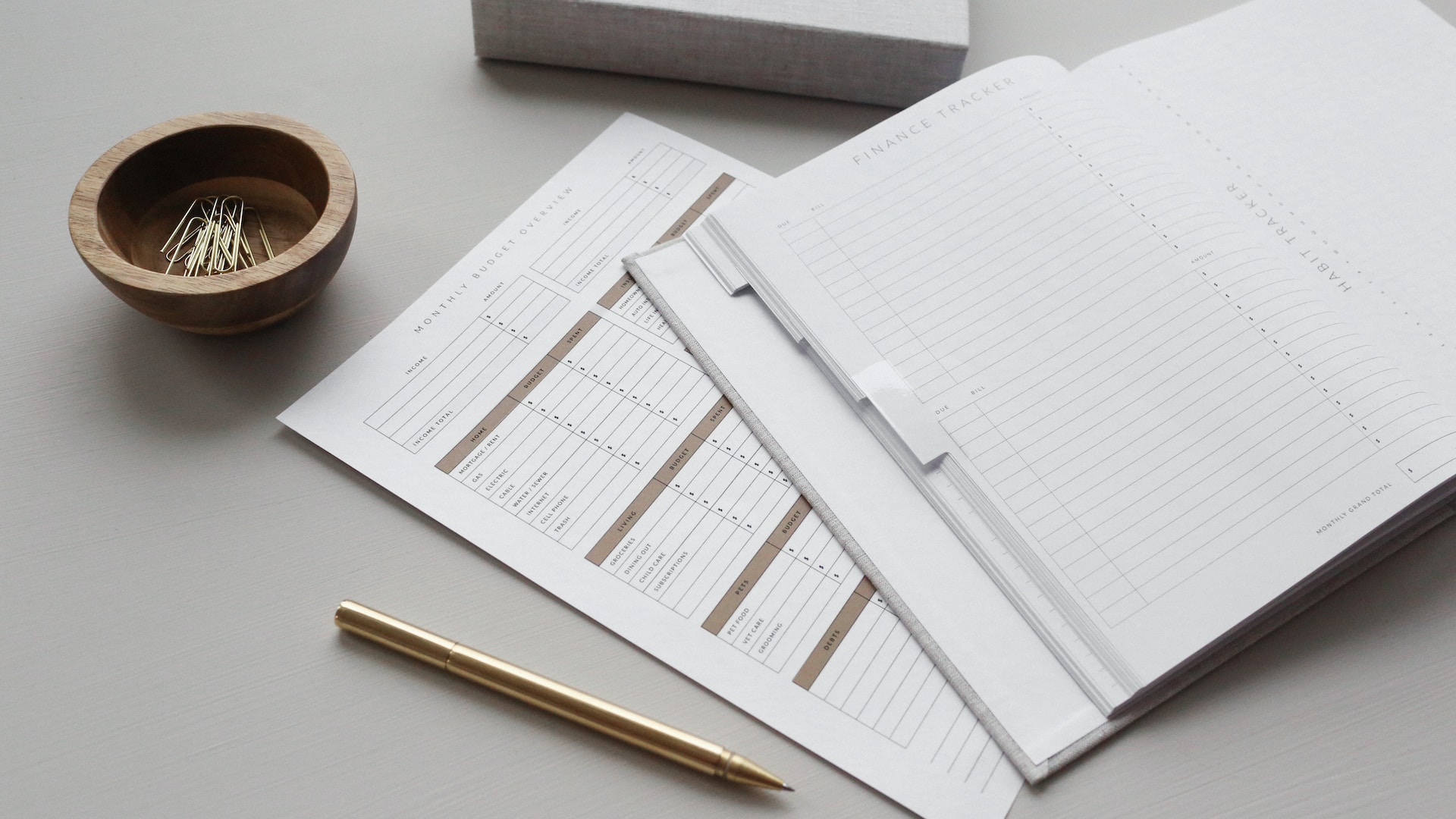
Managing and budgeting
Budgeting is a smart financial move that can help you take control of your expenses and avoid surprises in your monthly budget. There are different tools and apps that make tracking your utility usage and expenses a breeze.
Importance of budgeting for utility expenses
- Financial planning: Budgeting for utility expenses is essential for effective financial planning. It allows you to allocate a specific amount of your income to cover essential needs such as electricity, water, gas, and internet services
- Avoiding debt: Having a budget helps you avoid accumulating utility-related debt. By knowing your limits, you can make conscious decisions about your usage and prevent overspending, ensuring you can pay your bills in full and on time
- Emergency preparedness: Budgeting enables you to set aside funds for unexpected utility emergencies, such as repairs or replacements. An emergency fund ensures you won’t be financially strained if a major repair is needed
Tools and apps for tracking utility usage and expenses
- Utility company portals: Many providers offer online portals or mobile apps where you can track your usage, view bills, and set up alerts for unusual usage patterns
- Budgeting apps: General budgeting apps like Mint, YNAB (You Need A Budget), or PocketGuard allow you to create specific utility categories. They can link to your bank accounts and credit cards, automatically categorizing and tracking your expenses
- Energy management platforms: Some utility companies partner with energy management platforms that offer in-depth analytics on your energy usage. These platforms provide personalized recommendations to help you reduce your energy consumption and save on bills.
Creating a monthly budget and sticking to it
- Assess your income and expenses: Start by calculating your monthly income and listing all your fixed expenses, including utilities, rent/mortgage, insurance, and debts. Set a specific portion of your income to cover these expenses
- Set realistic targets: Analyze past utility bills to estimate your average monthly usage. Set a realistic budget based on these historical data points, accounting for seasonal fluctuations. Be conservative to avoid unexpected spikes in usage
- Monitor and adjust: Regularly compare your utility usage to your budgeted amounts. If you consistently exceed budget, consider adjusting your habits or exploring energy-saving options
- Plan for seasonal changes: Anticipate seasonal changes in utility usage, especially heating and cooling. Allocate extra funds during extreme weather months to avoid budget shortfalls
- Avoid unnecessary consumption: Encourage household members to be mindful of their energy and water usage. Simple habits like turning off lights when leaving a room, fixing leaks promptly, and being mindful of thermostat settings can contribute to staying within your budget
Create a budget to help cut down utility bills
To create a budget for cutting down your utility bills, first write down all the utility bills you pay. Gas, electricity, and water, if all apply. Take a look at what you have been spending on each and look for ways to cut down on your usage and reduce your bills. For your water bill budget, consider using the cold water setting on your washing machine more often and installing low-flow shower heads and faucets. When it comes to your electricity bill, there are many ways to conserve use and cut costs. You can install a smart thermostat and set temperatures to change for savings automatically. Seal leaks in your home, use space heaters in the winter, lower your HVAC, and hang your clothes up to dry instead of using the dryer. Buying energy-efficient appliances and plugs can help you save as well.
Cara from Penny Polly
Lowering utility bills at home is an achievable goal that benefits your wallet and the environment. By incorporating energy-efficient practices into your daily routines, you can significantly impact your energy consumption and save money.
